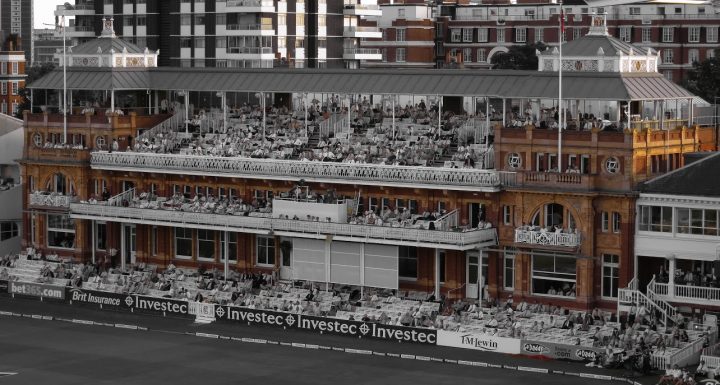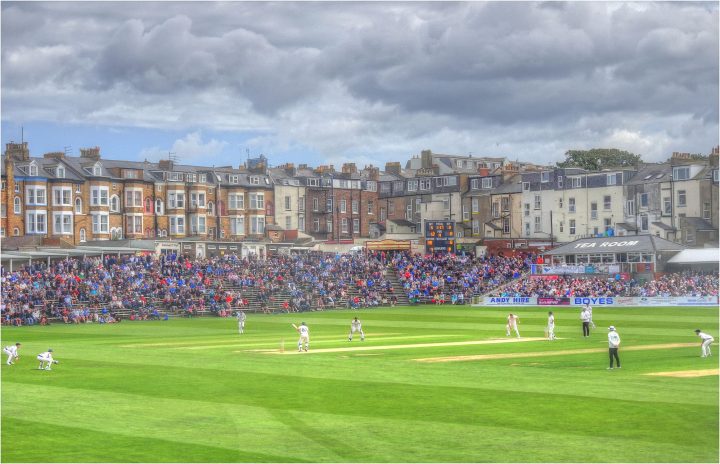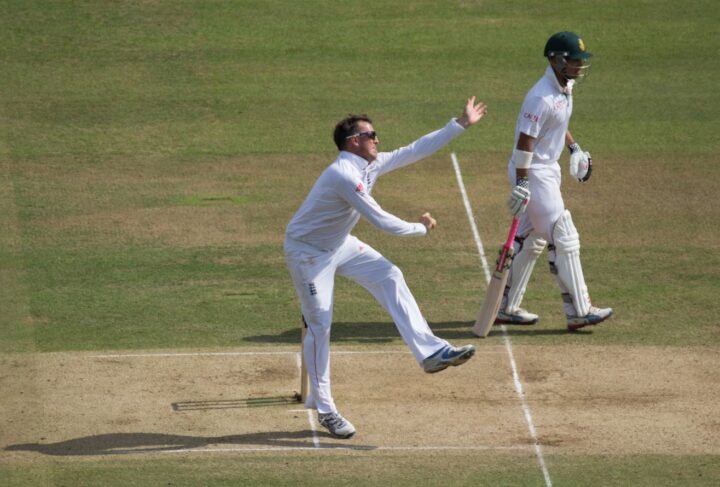Is there a more popular cricketer around the world than Brendon McCullum? I can’t think of one. He’s given the cricketing world so much pleasure over the years. It’s sad that he’s called time on his international career at the relatively tender age of 34. It sounds like he simply didn’t have the desire to continue. It’s a shame as he’s certainly fit enough to carry on.
McCullum’s test performances have actually improved with age. As his first innings at the Hagley Oval proved – the fastest century in the history of test cricket – he’s still one hell of a player at the peak of his powers. In his last six test series he’s averaged 69, 72, 35, 27, 42 and 45. That’s not bad at all. What’s more, it was only two years ago that he made his astonishing 302 against India.
Although McCullum joked about being ‘old school’ in his post-match interviews – he said New Zealand would probably be more professional and consistent under Kane Williamson’s leadership – I sensed he was being rather modest. He’s hardly piled on the pounds like an Inzamam during his thirties. Modern fitness regimes can extend a player’s career considerably.
While it’s tougher for fast bowlers to keep going indefinitely, batsmen can play well into their late 30s. Kumar Sangakkara was still prolific when he retired at the age of 37 (going on 38) as was Mahela Jayawardene. I’m not saying everyone can play top level sport into their late 30s – I’d have struggled to get through a single training session at the age of 21 – but dedicated professional sportsmen certainly can.
A bigger concern to batsmen is the stage at which their eye starts to go. Once that happens (even by 5%) it’s incredibly hard to face the world’s fastest bowlers. It’s interesting to note that Chris Rogers played 23 of his 24 tests after the age of 35. One of the factors in his retirement was the decision to play with pink balls on occasion – being colour-blind, Bucky found it hard to see.
These days cricketers can extend their careers by using general strength and conditioning programmes as well as cricket specific drills. These activities are very similar to those used by other sportsmen. In fact, some of them remind me of PE lessons at school (minus the knobbly knees and Green Flash trainers of course).
There’s squats, which build muscle in the quadriceps, calf muscles, and help to strengthen the spine. There’s simple press ups, which work the chest, delts and core. Then there’s pull ups, which do your lats, back and chest. Lunges are another good general exercise for cricketers because they improve balance and strength in the legs. Wicket-keepers and slip fielders are also encouraged to do deadlifts, which strengthen the back and core. Had I known this as a young man I wouldn’t have been crippled by constant bending over in the field.
Although fitness programmes reduce the chance of injuries, as can good diets, maxinutrition supplements and ice-baths, injuries still occur of course. I guess it’s because cricket makes sportsmen do unnatural movements repetitively. Michael Vaughan and Kevin Pietersen both suffered knee injuries. Michael Clarke had a chronic back problem that hastened his retirement.
However, as far as I know, injuries aren’t the main reason why McCullum has called it a day. He has something of a recurring back problem but this hasn’t affected his performances at all. He says in the audio clip above that he simply wants to spend more time with his family. He also says New Zealand would benefit from a change of leadership.
It’s interesting that McCullum decided to call it a career now rather than wait until after the World T20 in India next month. After all McCullum IS going to play in this year’s IPL (which starts immediately afterwards). He’s been signed up by Rajkot for a rather large sum of money – not that we’re begrudging him a big paycheque at this stage of his career.
Consequently, one wonders whether fitness is a red herring in this day and age. Maybe McCullum simply wants to maximise his earning potential while simultaneously finding more time to enjoy his kids?
The big issue, I suppose, is whether somewhat premature international retirements will become a trend? With national boards scheduling a ridiculous amount of cricket, the temptation to pack in internationals and cash in on lucrative T20 tournaments must be humungous when players reach a certain age.
In case you’re interested, AB de Villiers is just two years younger than McCullum. I wonder what he’ll be doing in March 2018?
James Morgan









It’s always a sad moment when a great player calls it a day. I’m very sorry to see McCullum go while still missing Kumar Sangakkara.
The lure of the IPL must be difficult to resist towards the end of a career. Giving up on being away from home for long periods and the slog of touring while bringing in extremely good money. I can’t see how anyone can be condemned for that.
I’m pleased that AB has been given the chance to captain South Africa. It’s something that has been long deserved. Because of that we might see him around for a little while longer, but he will also be soon gone.
Still, we have some exciting young batsmen coming up in a rapidly changing game. Let’s bring it on.
I can date my favourite Brendon McCullum moment quite precisely – 28th November 2014. NZ were 1-0 against Pakistan in Sharjah and had taken another pounding from the Pakistan batsmen when the news came in late on the 26th that Phillip Hughes had died. Play was suspended on the 27th and resumed on the 28th. At first, the match was played in a state of shock and nobody really wanted to be there. I’m still not sure why I had it on – but I have a lot of affection for both teams and stuck with it.
Pakistan collapsed, McCullum came in and launched the most amazing attack on the Pakistan bowlers. Unlike the last innings in Christchurch, he needed little luck. The bowling attack he took apart had just thrashed Australia, NZ themselves had struggled with it and of course England have now lost to it. Talha became so angry he started bowling bouncers again and it felt like proper Test cricket had resumed. At the end of the day, I was back in love with the game. McCullum actually reined himself in on the following day – and pushed NZ into a winning position. It was his greatest achievement as captain in my book (although getting to the WC Final is a close second).
Thanks for the memory, Brendon.
Baz’s back is in a pretty bad way, he’s needed painkillers and a lot of physio attention to get on the field for the past couple of years. I can understand how that can get a bit wearying.
Sadly NZ kept him on as keeper for too long, because there was no one else to do the job, when we could’ve seen a lot more of McCullum the test batsman.
He’ll be badly missed.
The fastest ever hundred in your last test is a great way to finish – even though it couldn’t stop the defeat it was the difference between an innings defeat in 3.5 days and a hard fought 5 day test.
Following the game on cricinfo I couldn’t believe it when the score jumped from 33/3 off 19.4 overs to 58/3 off 21 then continued in this fashion for the next hour or so taking 220 runs of around 25 overs.
Highly entertaining, but I am still not sure that playing this way despite its success here was optimal for the NZ team as a whole. Australia piled on far more by solid graft something I feel they have learned to value since Trent Bridge. You don’t always need to score 4 runs an over.
Of course I should mention that the series brought Australia back to the (rightful!) position of number 1 test side for year end. With thanks to England and India for beating SA for us.
Australian top five batting averages are now.
Burns 49.5
Warner 50.5
Khawaja 49.5
Smith 60.2
Voges 95.5
Which is a turn around from 2013 when Clarke was the only one averaging much more than 35, and the tail scored half the runs – rarely have the tail batted in the 8 tests over the Summer.
Sic transit gloria…
But what a way to go. Few cricketing careers end so well.
I’ve been watching the NZ test side since the late 1970s and the McCullum era has been one of the most exciting I have seen. One thing that really pleased me more than anything else was seeing crowds of people at test matches in NZ, which I have literally never seen before. NZ is not like England or Australia where tests are tops. Instead ODI have dominated for over 40 years and test crowds over that period have been pitiful. The only time I watched a test in Christchurch was back in the season 1996/97, and on the second day of the test at Lancaster P. between England and NZ I arrived to find a crowd outnumbered by players and media people. For someone like myself its just so amazing to see a packed house at Hagley Park (yes I know its a small house but still) and its really all down to one man. McCullum always was one of the great ODI and 20/20 players, but the Big Mac has managed to pack the test match grounds in NZ, which no one has come close to doing in my life time.
One last thing. For those England supporters who despair at how the game in England is run, just remember. McCullum was the NZ cricket bureaucrats’ second choice of captain and if they had had their way would never had led NZ in tests.
For me I have to separate out a few things.
As a entertainer McCullum was for me one of the best in world cricket.
I believe his attitude on how to play the game (Spirit of cricket) was world leading and a sign that aggressive sledging/gobbing off has no place in the game as it doesn’t make a jot of difference to how ‘hard’ you play the game. It just means you ensure it’s not an enjoyable game
As a batsmen, he was batting to high generally in the end for me.. He was a no:7 really but needs must for NZ and he did a job
Overall, the game has lost one of the most respected and popular men and that is the legacy he leaves on me. I don’t look at his cricket and think ‘wow, the game will miss that skill’, however, white ball cricket will miss his style as it probably opitamises the modern white ball style